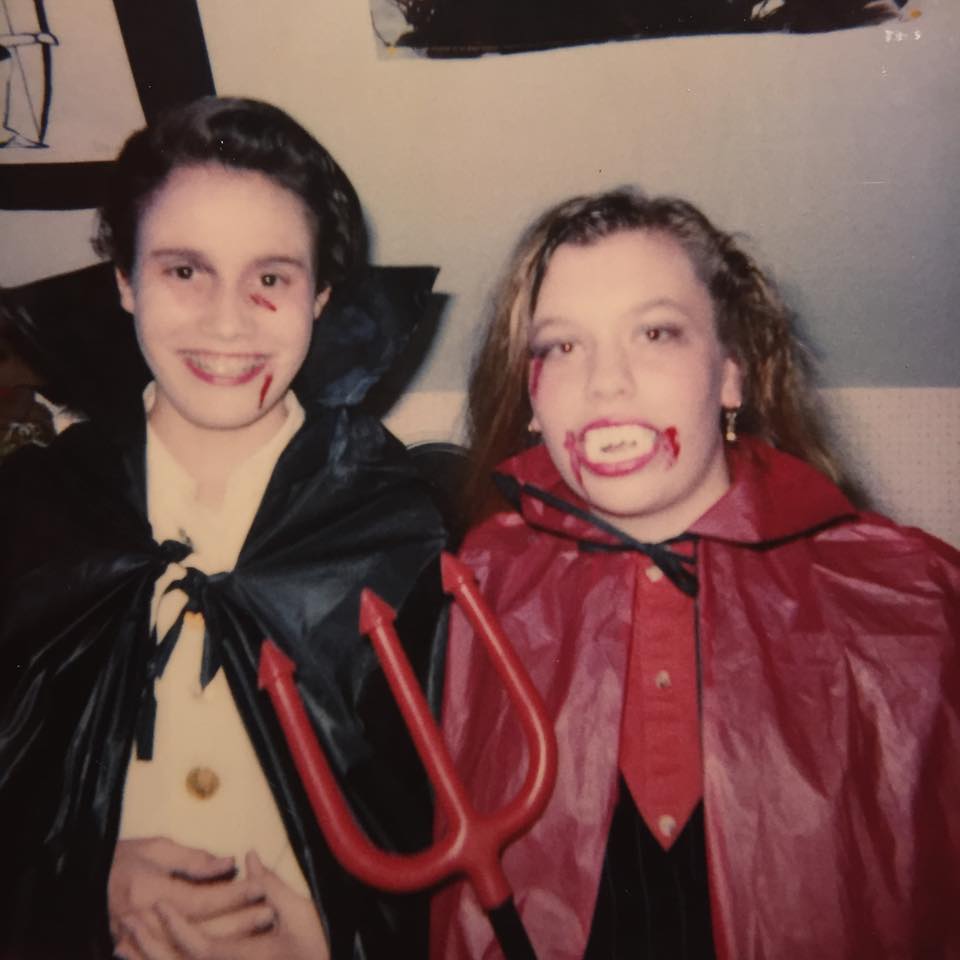
I’ve noticed the term “defanged” being used rather loosely lately (e.g. Smith 2011; Varney 2009), but in a trendy sort of way. I didn’t really give it much thought until I read Robert Rath’s Escapist article, “How Society Defanged the Vampire” (2014). The following passages caught my attention (1):
Vampires are mythology kings — a creature so buried in our consciousness that a mere mention draws up a picture in our mind’s eye. But here’s the thing: they don’t really scare us anymore. You find bloodsuckers on cereal boxes, on Sesame Street and in romance novels these days, rather than in the tomb.
Also (3):
These days we fetishize and identify with Vampires more than we empathize with their victims, meaning they’ve ceased to be monsters. And there’s nothing wrong with that, really, since vampires seem more popular than ever – but it puts a stake through the heart of the vampire as a horror figure.
It resonated because it made me think back on my own experiences. Were they ever monsters to me? Had I been desensitized to them?
I remember sitting cross-legged on the floor in front of the TV when I was 5-years-old watching Sesame Street before afternoon kindergarden class. Oscar the Grouch, Big Bird, Bert and Ernie were entertaining, but looking back on it now, Count von Count was my first introduction to vampires.
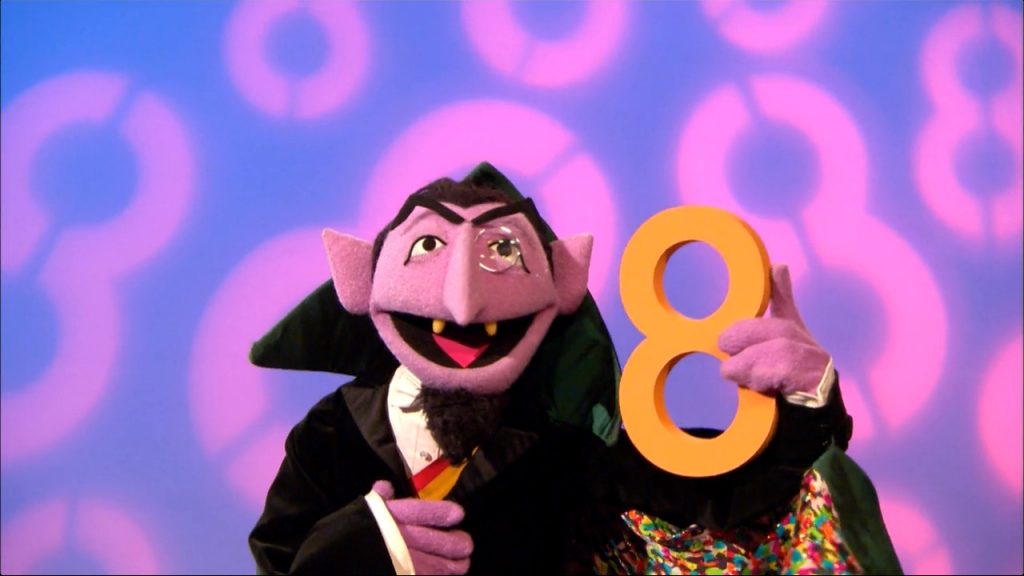
The Muppet sporting a cape, purple skin, big eyebrows, fangs and an accent intrigued me. Did I understand what he was supposed to be? Not at all. I was too busy learning numbers.
Sesame Street debuted on Nov. 10, 1969, but the Count didn’t make his first appearance until Nov. 27, 1972. According to Wikipedia, he was “modelled after Bela Lugosi’s interpretation of Count Dracula.” The character was remoulded into a more “kid friendly” vampire in the mid-1970s, after his slightly more sinister portrayal in the early years:
[su_youtube url=”https://youtu.be/xunXQPEcoHM”]
They took away his “glamouring” powers and gave him a new laugh with a more Dracula-like feel to it. So what does the Count do on the show? According to Wikipedia:
A typical role of the Count is him saying to the audience “Greetings, it is I the Count. They call me the Count because I love to count things.” Then he would find something to count and say “That is one (insert object here)” and go on until he would then smile after counting; and chuckle “Ah… ah… ah!” following a calm sound of thunder and lightning before continuing until he found a reason to move on from his performance for the other cast.
Sesame Street is still going strong; the show celebrated its 45th birthday in 2014. I’m not sure how they came up with the whole concept of a “counting vampire” on a kid’s show, but the “Is the Count on Sesame Street a Vampire?” page on Muppet Wiki provides further insights into the character: “The Count’s profile on Sesame Workshop’s website refers to the character as a ‘number-friendly vampire’ and suggests that he may be a distant relative of Count Dracula,” adding:
Some traditional vampire myths depict vampires as having a similar fixation with counting small objects, providing a means of distracting them by tossing a handful of seeds or salt on the ground. This is seen as a protection from the vampire. The Count’s own arithmomania may simply be a coincidence, however, with the character inspired more by the pun on his title of nobility. “We have tried to make it clear that the Count is not a representative of evil. he is presented a rather eccentric character – obsessed with counting everything in sight. Other characters on Sesame Street react to the Count’s behaviour with amusement (or sometimes exasperation) but never fear.”
Though apparently coincidental, the folkloric precedent is discussed in Paul Barber’s Vampires, Burial & Death: Folklore and Reality (1988, 49):
Various granular substances are put into graves or strewn along the path to the graveyard in order to hinder the revenant, and these include millet, sea sand, mustard seeds, oats, linen seeds, carrot seeds and poppy seeds.
Without knowing it, this kid’s show was setting the precedence and groundwork for future vampires for me.
Another show I used to watch when I was a kid incorporated an entire cast of monsters, not just vampires. I used to get up at 6 a.m. to watch it, because it only aired at that time. I’d curl up on the couch by myself with a blanket and watch my favourite creepy monsters on The Hilarious House of Frightenstein.
It first aired in 1971 comprised of 130 episodes that were filmed in only nine months. It’s quite amusing and see if you can spot the well-known horror actor who made regular guest appearances:
[su_youtube url=”http://youtu.be/geOAXYL_FDo”]
If you want the gist of the show, according to Wikipedia:
The chief character, Count Frightenstein (Billy Van), was the thirteenth son of Count Dracula and was exiled to Castle Frightenstein in Frankenstone, Canada for failing to revive Brucie J. Monster, a Frankenstein-like monster. Assisted by Igor (Fishka Rais), an overweight incompetent, and a three-foot-tall mini-Count (Guy Big), each episode followed the Count’s efforts to revive Brucie and featured comedy sketches. Each episode opened and closed with an appearance by the venerable horror star Vincent Price as he recited intentionally silly poetry with toy skulls and shrunken heads in the background. Price also did introductions for segments within the show.
One of Vincent Price’s opening poems was:
Another lovely day begins, for ghosts and ghouls with greenish skin. So close your eyes and you will find that you’ve arrived in Frightenstein. Perhaps the Count will find a way to make his monster work to-day. For if he solves this monster-mania, he can return to Transylvania! So welcome where the sun won’t shine, to the castle of Count Frightenstein!
Other characters included the Wolfman, a werewolf DJ; Grizelda, a witch whose cooking shows ended with explosions; and the Librarian, a scary story teller who wasn’t so scary.
The show blended horror with fun. It made me feel more grown up too, watching a show about monsters. Like Sesame Street, the show unintentionally taught me that horror and in this case, vampires, aren’t scary.
Growing up Saturday mornings were the best day of the week for kids shows. I remember we got up early and crammed in as many cartoons as we could by noon. We were bombarded with adverts, plugging toys and food, so we would beg our parents for the latest craze. It was all a marketing ploy and I it worked. This commercial from the 1970s is a classic example:
[su_youtube url=”http://youtu.be/xr-xtUoTcZM”]
Count Chocula made more of an impression on me than Franken-Berry. Perhaps it was the vampire or the chocolate factor? I remember my impression of Franken-Berry was a dumb monster, which kind of put me off, even at a young age. Also it sounds strange, but I wasn’t a fan of pink things as a kid either: in fact I was anti-pink.
Speaking of pink, both these tasty treats came out in 1971 and one of them had some strange effects on kids. Some reported having “Franken-Berry Stool” (Niemietz 2009):
A benign medical condition addressed by the University of Maryland Medical School in February 1972, in which some kids’ inability to break down the heavily dyed breakfast foods causes more than just cereal bowls to change colours. Good luck finding a 10-year-old who sees that as a bad thing.
Niemietz adds: “Count Chocula, spokesmonster for the original Monster Cereal that launched in 1971, was a cartoon vampire who preferred chocolate to blood.”
A vampire that loves chocolate, not blood. How’s that supposed to be scary? Wikipedia elaborates that since 2010, General Mills has annually brought back the spooky cereal line for Halloween. In 2014, the company partnered with DC Comics for a complete re-branding to get with the times and revive their horror cereal lines, re-enforcing to kids that vampires are cool.
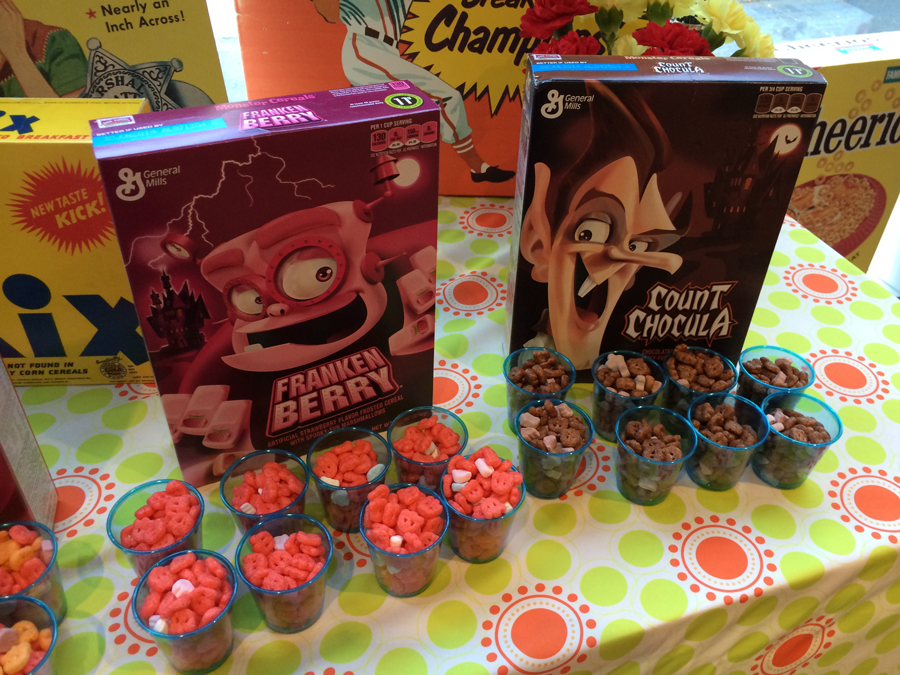
I actually saw it last Halloween and almost picked up a box, until I read the sugar content and the ingredients list. Not the best food choice for anyone. But if you want to talk healthy, my next vampire influence was a vampire bunny that doesn’t suck blood, but juice from veggies instead—a vegan vampire.
When I was about eight, I read my first vampire book was Deborah and James Howes’ Bunnicula: A Rabbit-Tale of Mystery (1979). The concept of combining a cute bunny with a vampire appealed to because at the time I used to babysit some bunnies for our neighbours.
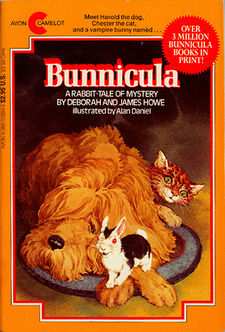
A couple of years later my I got into the horror movies in particular. We lived at my grandma’s house for a six month period in grade five while my parents built a new house so all our stuff went into storage.
For the first time ever we had Superchannel or what we now call a movie channel. During our stay I watched an excessive amount of movies. I discovered movies like Hellraiser, Friday the 13th, Halloween, and Nightmare on Elm Street.
Vampires didn’t enter the picture until high school when I randomly found Anne Rice’s The Vampire Lestat (1985) in my high school library, which appealed to the horror genre I was already obsessed with by that age.
Anne Rice’s books were the game-changer that properly introduced me to the world of vampires. I had no idea I started mid series so I bounced back to her first book Interview with the Vampire (1976) before ploughing through the remainder of the series. This also intertwined with a brief interest I had in witchcraft after reading Rice’s The Witching Hour (1990) after the vampire series.
I instantly fell in love with Lestat’s charisma, charm and confidence. Lestat had the care-free attitude of doing what he wanted, when he felt like it, which would appeal to any teenager. I even joined the Anne Rice Fan Club and received newsletters, photos, and stickers that I plastered all over my room.
Since I didn’t pick up her books till a year after Interview With The Vampire (1994) was released in the theatres, it took me a while to see the film.
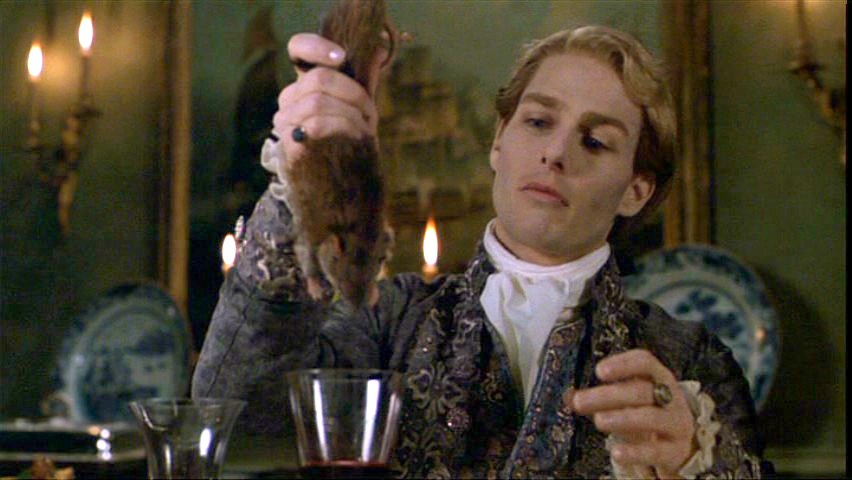
The film brought her characters I loved to life and made them real. Tom Cruise was Lestat and immortalized the character in my brain for years to come, which was met with disappointment with his absence from the film Queen of the Damned (2002).
In 1997, Buffy the Vampire Slayer hit the TV scene as a spin-off of the 1992 cult movie of the same name. I watched Buffy, but I wasn’t a devoted fan because I was never into the whole high school aspect of the plot. I have to admit Giles (Anthony Stewart Head) was one of my favourite characters being the “go to” guy for info.

The character of Angel (David Boreanaz) appealed to me because he exhibited similar traits to Lestat and Louis; another compassionate vampire with a soul. It’s like they took Anne Rice’s characters to the next level by adding a human into the mix.
When you entwine romance with vampires, it strips them of all things frightening and the audience sees a guy in love, not a vampire. Without knowing it back then, his relationship with Buffy set the precedence for novels, TV shows and movies like Twilight and The Vampire Diaries.
Stephanie Meyers’ Twilight was published 2005, but I didn’t read it until 2007. I only picked up a copy because everyone I knew was reading the damn thing. I read the whole series and in all honesty it wasn’t bad.
Whether people like to admit it or not Edward Cullen had a huge part to play in defanging. He was hot, emotional, protective, compassionate and despite saying he didn’t have a soul, we all know he had one. After all you can’t love without a soul can you?

His image of sparkling in the sun, being a vegetarian, over protective and so damn perfect looking threw all tropes out the window. Vampires going to high school and living just like normal people appeals to the fantasy element and makes them more real to the audience. Women of all ages were swooning and him being a vampire was just a bonus.
I personally think if Meyers had traded places with Jacob, the effect would have been astronomical. Werewolves would have been the new marketable favourite competing with the vampire genre. Instead they come a close second.
When the first Twilight movie came out in 2008 I watched it on the Movie Channel and after reading the books I was disappointed. I think the movies could have been a 100 times better if they cast another actress to play Bella. Kristen Stewart’s poor acting skills ruined the character for me.
Stewart’s role as Bella clearly didn’t affect the movie revenue because according to Box Office Mojo’s vampire list, Twilight currently holds the number five spot grossing $192,769,854; the remaining top spots are held by the other films in the Twilight saga (“Vampire: 1978-Present” 2015). So you can’t tell me these movies haven’t affected the genre at all, if anything they have dominated it.
Twilight used high school as a backdrop their for vampires, but The Vampire Diaries TV show (2008–) took this concept a step further by building its entire concept around vampire high schoolers.
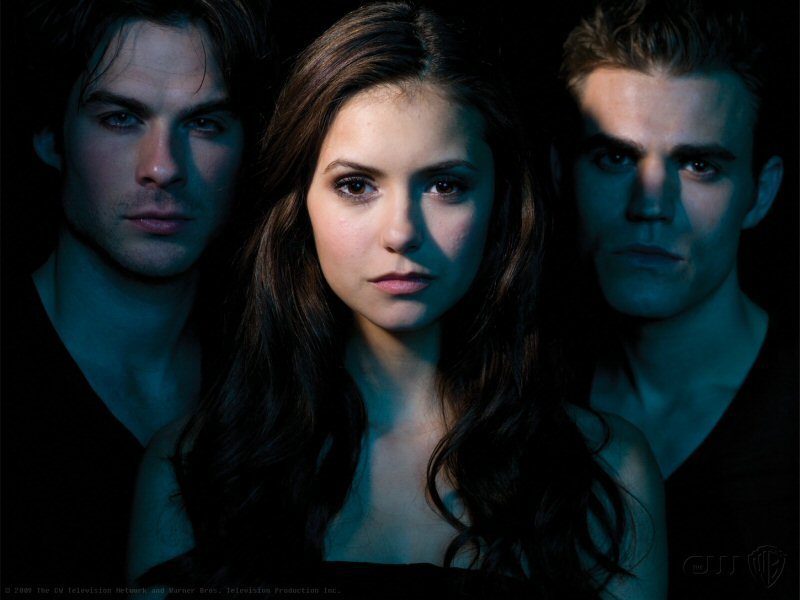
The show embraces the whole vampires-in-the-shadows bit and keep your identity hidden from humans, except they can be like normal students with their daylight rings. They can go to the beach with their buddies and not burn to a crisp
I originally got on the Vampire Diaries bandwagon for this show because they filmed the pilot episode in Fort Langley, British Columbia, where I grew up so I thought it was a big deal when I saw the town hall in the episode.

Stefan (Paul Wesley) and Damon Salvatore (Ian Somerhalder) are built in the same image as Edward, but in sense split into two characters. One is a reckless bad boy vampire while his brother is the sensitive good one. I got sucked into the drama of the show and just kept watching it.
Plus they combined witches, werewolves and vampires into a nice tidy little package, yet the plot was drug out at times. I admit parts of it were cheesy, but I found myself rooting for Damon to end up with Elena (Nina Dobrev). I kept watching the show until I broke up with it on Feb. 11, 2014 (Chapman 2014a).
For me the “classic” vampire doesn’t really exist. As some of you may know my knowledge of vampire classic films is next to nothing hence the reason for my “Virgin’s View” posts (Chapman 2014b; 2015).
I only started reading Dracula last year and am slowly making my way through it. My film impression of Dracula is limited to Bram Stoker’s Dracula (1992) and little snippets of random movies over the years that I can’t recall.
What made this “classic” vampire was the ambiance that accompanied the character itself. It is kind of a package deal. Over the years the vampire has adapted to changes in the genre like a creature approaching extinction.
Gone are the days of vampires in capes with accents and pale skin that sleep in silk-lined coffins during the day, dwelling in creepy castles with thunder and lightning storms illuminating the night sky.
Hollywood gets most of the credit for this massive shift in vampire culture; however, authors are also to blame. It’s like one gets a good idea and the next hit movie, show or book builds on it and the classic tropes evolve again and again like the telephone game until the origin has completely disappeared.
Also vampires are never portrayed as average guys, you will never see anything but a hot vampire now. If you look at say Dark Shadows (1966–71), Jonathan Frid wasn’t a bad looking vampire, but by todays standards he would never fly with Hollywood execs.
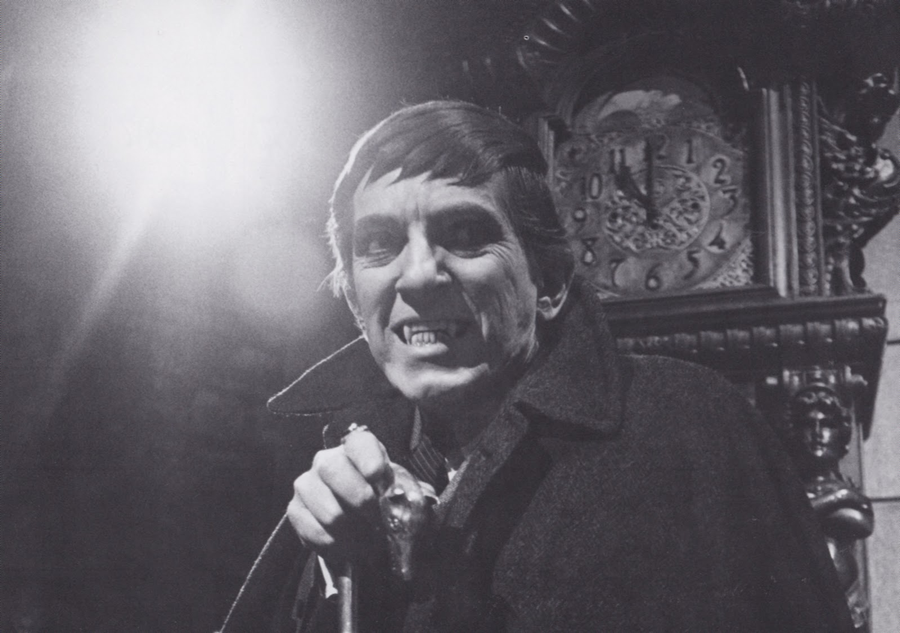
When I decided to write my own novel I wasn’t influenced by the classics, but more what I’m familiar with from my generation and what is popular with fans. I’m also guilty of going with the flow and making my own vampires more human and neutered. As they say, write what you know.
As for defanging or rendering vampires harmless, I think my generation has to take a lot of responsibility for this. Looking back on my childhood, now I can honestly say that’s where it all started for me. I wasn’t taught to be afraid of vampires, but more encouraged to embrace them from an early age.
My vampire influences came from commercialized sources and Anne Rice’s novels. For me, classic vampire films weren’t part of the equation because I was never exposed to them in the first place. Vampires couldn’t become defanged to me, when they never had “fangs” to start with.
References
Barber, Paul. 1988. Vampire, Burial & Death: Folklore and Reality. New Haven: Yale University Press.
Chapman, Erin. 2014a. “I’m Sorry, Vampire Diaries—It’s Over.” Vamped, Feb. 11. Accessed March 16, 2015. http://vamped.org/2014/02/11/im-sorry-vampire-diaries-its-over/.
———. 2014b. “A Virgin’s View on Nosferatu.” Vamped, July 31. Accessed March 16, 2015. http://vamped.org/2014/07/31/a-virgins-view-of-nosferatu/.
———. 2015. “A Virgin’s View on Vampyr.” Vamped, Jan. 29. Accessed March 16, 2015. http://vamped.org/2015/01/29/a-virgins-view-on-vampyr/.
Niemietz, Brian. 2009. “It’s Berry Scary.” The New York Post, Oct. 31. Accessed Nov. 2, 2014. http://nypost.com/2009/10/31/its-berry-scary/.
Rath, Robert. 2014. “How Society Defanged the Vampire.” The Escapist, Oct. 2. Accessed Dec. 17, 2014. http://www.escapistmagazine.com/articles/view/video-games/columns/criticalintel/12353-The-Mythology-of-The-Vampire-Is-Losing-Its-Mystique.
Smith, Carissa. 2011. “The Vampire Defanged: An Interview with Susannah Clements.” Christ and Pop Culture (blog), Patheos, June 16. Accessed Nov. 2, 2014. http://www.patheos.com/blogs/christandpopculture/2011/06/the-vampire-defanged-an-interview-with-susannah-clements/.
“Vampire: 1978-Present.” 2015. Box Office Mojo, last updated March 16, 1:24p.m. PT. Accessed March 16, 2015. http://www.boxofficemojo.com/genres/chart/?id=vampire.htm.
Varney, Bertena. 2009. “Vampires- Fanged and Defanged.” Examiner.com, June 7. Accessed Nov. 2, 2014. http://www.examiner.com/article/vampires-fanged-and-defanged.
For two articles in a similar vein (heh), see Selene MacLeod’s “Why I Hate Fangst” and Dan Shaurette’s “Do Your Vampires Sparkle?” Have vampires been neutered beyond recognition? Share your thoughts below.
Erin, this subject was touched on in the final Blade film (Trinity) when Drake enters a memorabilia shop and reacts to the trivialisation of the vampire and Dracula in particular.
Ah that’s right. I forgot about that one, haven’t seen it for years. I guess my biggest realization through writing this article was I determined what vampires influenced me. As you know from our discussions on Virgin’s Views and since you suggested the last film I watched, that I am not very familiar with vampire classics.
Basically the classics for me are nonexistant. I guess I am working backwords in a way. I know Anthony has given me my next movie assignment so it should be enlightening.
I remember you saying one of your favorites was Isle of the Dead with Boris Karloff and you enjoyed Hammer Films as well. Did you have any other outside influences besides films as a child?
I too watched Sesame Street as a kid (and lots of Scooby Doo) so they will likely have influenced me. I strongly remember watching the 1979 Salem’s Lot (I was 9) and it scaring the crap out of me… I also remember reading King’s book as a result, indeed I read a lot of horror and fantasy books – so they will have had an influence.
I think the more we ask people, the more you will see Sesame Street pop up. The question is was it the first vampire other kids saw too? I loved Scooby Doo as well. Not too many vampire episodes, but the mysteries were a fav of mine. So thinking back what would be your very first encounter with a vampire and at what age?
Honestly I don’t know… the earliest I can clearly remember is Salem’s Lot. However I know that Count von Count will have been before then, I am fairly certain Isle of the Dead was seen before then (but I didn’t know it was a vampire movie until I was an adult and so I don’t think that counts), Likely I saw some of the Hammer before then (I know that would make me rather young for watching them but if they aired on telly I could well have sneaked a watch) and, of course, there were the occasional vampiric appearances in cartoons (such as Bugs Bunny)